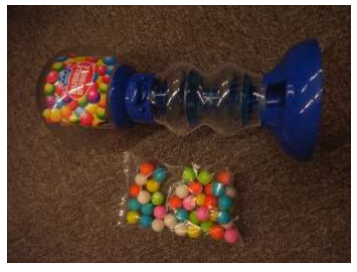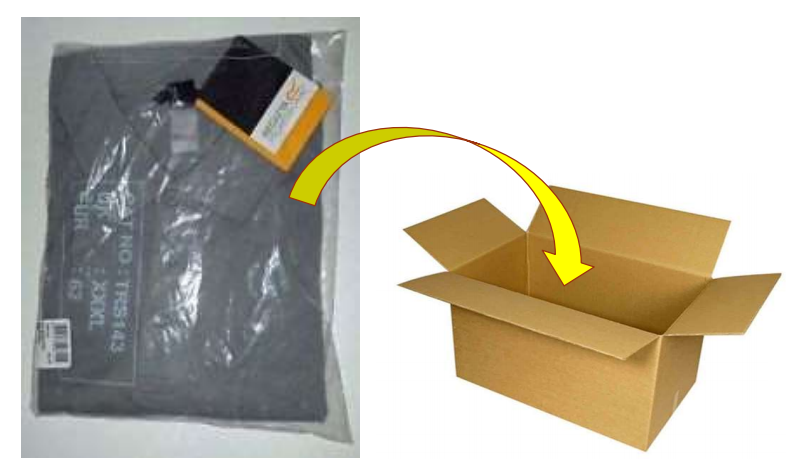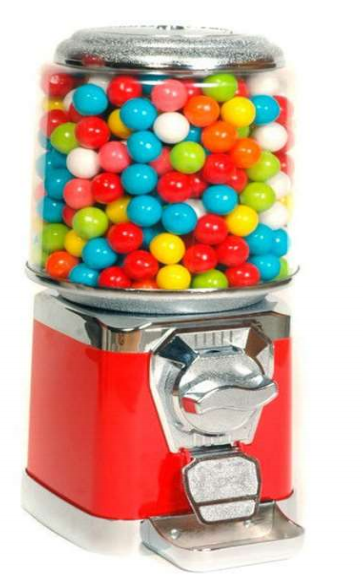Table of Contents
Rule 5 Containers
IN ADDITION TO THE FOREGOING PROVISIONS, THE
FOLLOWING RULES SHALL APPLY IN RESPECT OF THE GOODS
REFERRED TO THEREIN:GRI 5 has two sections: GRI 5 (a) and GRI 5 (b).
These two sections deal with various types of containers presented with
the articles for which they are intended.
Rule 5 (a) Special containers
(a) CAMERA CASES, MUSICAL INSTRUMENT CASES, GUN CASES,
DRAWING INSTRUMENT CASES, NECKLACE CASES AND SIMILAR
CONTAINERS, SPECIALLY SHAPED OR FITTED TO CONTAIN A
SPECIFIC ARTICLE OR SET OF ARTICLES, SUITABLE FOR LONGTERM
USE AND ENTERED WITH THE ARTICLES FOR WHICH THEY
ARE INTENDED, SHALL BE CLASSIFIED WITH SUCH ARTICLES
WHEN OF A KIND NORMALLY SOLD THEREWITH. THIS RULE DOES
NOT, HOWEVER, APPLY TO CONTAINERS WHICH GIVE THE WHOLE
ITS ESSENTIAL CHARACTER;
GRI 5 (a) deals with the treatment of long-term use cases, boxes, and similar containers
presented with the articles for which they are intended. Under this rule, long-term use
containers imported with articles for which they are intended to be used are to be
classified with the articles if they are of a kind of container normally sold with such
articles (e.g., camera cases with cameras and musical instrument cases with musical
instruments). This rule, however, does not apply to containers that give the imported
article its essential character (e.g., a silver tray or dish containing tea or a high-quality
ornamental ceramic bowl containing candies or sweets). Such merchandise is to be
classified under the heading for the container.
EXAMPLE1: Violin(HS9202) with case(4202)

Retrieved from: HARMONIZED COMMODITY DESCRIPTION and CODING SYSTEM or HARMONIZED SYSTEM(HS)
Packing materials and packing containers entered with the
goods therein shall be classified with the goods if they are of
a kind normally used for packing such goods.
Violin with a case would be classified as Violin(HS9202) if the items
satisfie Rule 5(a).
EXAMPLE2:Gumball with toy packaging

Retrieved from: HS Classification by Japan customs
It seems that it satisfies Rule 5(a) but in this situation Gumball and toy packaging
should be classified separately because of Rule 5(a) states that,
THIS RULE DOES NOT, HOWEVER, APPLY TO CONTAINERS WHICH GIVE THE WHOLE
ITS ESSENTIAL CHARACTER;
Toy packaging gives the whole it’s an essential character.
Therefore Gumballs are classified HS1704
The toy packaging is classified HS9503 as Toy.
EXPLANATORY NOTE for RULE 5(a)
(I)This Rule shall be taken to cover only those containers which :
(1) are specially shaped or fitted to contain a specific article or set of
articles, i.e., they are designed specifically to accommodate the
article for which they are intended. Some containers are shaped in
the form of the article they contain;
(2) are suitable for long-term use, i.e., they are designed to have
durability comparable to that of the articles for which they are intended.
These containers also serve to protect the article when not in use
(during transport or storage, for example). These criteria enable them
to be distinguished from simple packings;
(3) are presented with the articles for which they are intended, whether
or not the articles are packed separately for convenience of transport.
Presented separately the containers are classified in their appropriate
headings;
(4) are of a kind normally sold with such articles; and
(5) do not give the whole its essential character.
(II)Examples of containers, presented with the articles for which they are intended,
which are tole classified by reference to this Rule are :
(1)Jewelry boxes and cases (heading 71.13);
(2)Electric shaver cases (heading 85.10);
(3)Binocular cases, telescope cases (heading 90.05);
(4)Musical instrument cases, boxes and bags (e.g., heading 92.02);
(5)Gun cases (e.g., heading 93.03).
(III) Examples of containers not covered by this Rule are containers such as a
silver caddy containing tea, or an ornamental ceramic bowl containing sweets.
Rule 5 (b) Packing materials & containers
(b) SUBJECT TO THE PROVISIONS OF RULE 5(a) ABOVE, PACKING
MATERIALS AND PACKING CONTAINERS ENTERED WITH THE
GOODS THEREIN SHALL BE CLASSIFIED WITH THE GOODS IF
THEY ARE OF A KIND NORMALLY USED FOR PACKING SUCH
GOODS. HOWEVER, THIS PROVISION IS NOT BINDING WHEN SUCH
PACKING MATERIALS OR PACKING CONTAINERS ARE CLEARLY
SUITABLE FOR REPETITIVE USE.
GRI 5 (b) states that packaging containers and materials not normally intended to be
reused are classified with the articles in which they are presented or imported (e.g.,
cardboard boxes or containers containing food products). This rule, however, does not
apply to packaging materials or packing containers clearly suitable for repetitive use
(e.g., certain metal drums or containers of iron or steel for compressed or liquefied gas).
Such containers are to be classified separately from the materials that they hold.
Example1: Men’s shirts individually sealed in a polybag then packed in cardboard boxes

Retrieved from: HARMONIZED COMMODITY DESCRIPTION and CODING SYSTEM or HARMONIZED SYSTEM(HS)
In this situation, Men’s shirts with the cardboard box are entirely classified
as shirts.
EXAMPLE2: Gumball dispensing machine

Gumball dispensing machine (predominantly of zinc alloy) imported with gumballs.
It is designed to accept a coin and release a candy.
It seems that it satisfies Rule 5(b), but in this situation Gumball and dispensing machine
should be classified separately because of Rule 5(b) states that,
HOWEVER, THIS PROVISION IS NOT BINDING WHEN SUCH
PACKING MATERIALS OR PACKING CONTAINERS ARE CLEARLY
SUITABLE FOR REPETITIVE USE.
Dispensing machine is considered as a container which suitable for repetitive use.
Therefore Gumballs are classified HS1704
The dispenser is classified HS7907.
EXPLANATORY NOTE for RULE 5(b)
(IV) This Rule governs the classification of packing materials and packing containers
of a kind normally used for packing the goods to which they relate. However, this
provision is not binding when such packing materials or packing containers are clearly suitable for repetitive use, for example, certain metal drums or containers of iron or
steel for compressed or liquefied gas.
(V) This Rule is subject to Rule 5 (a) and, therefore, the classification of cases, boxes
and similar containers of the kind mentioned in Rule 5 (a) shall be determined by the application of that Rule.
